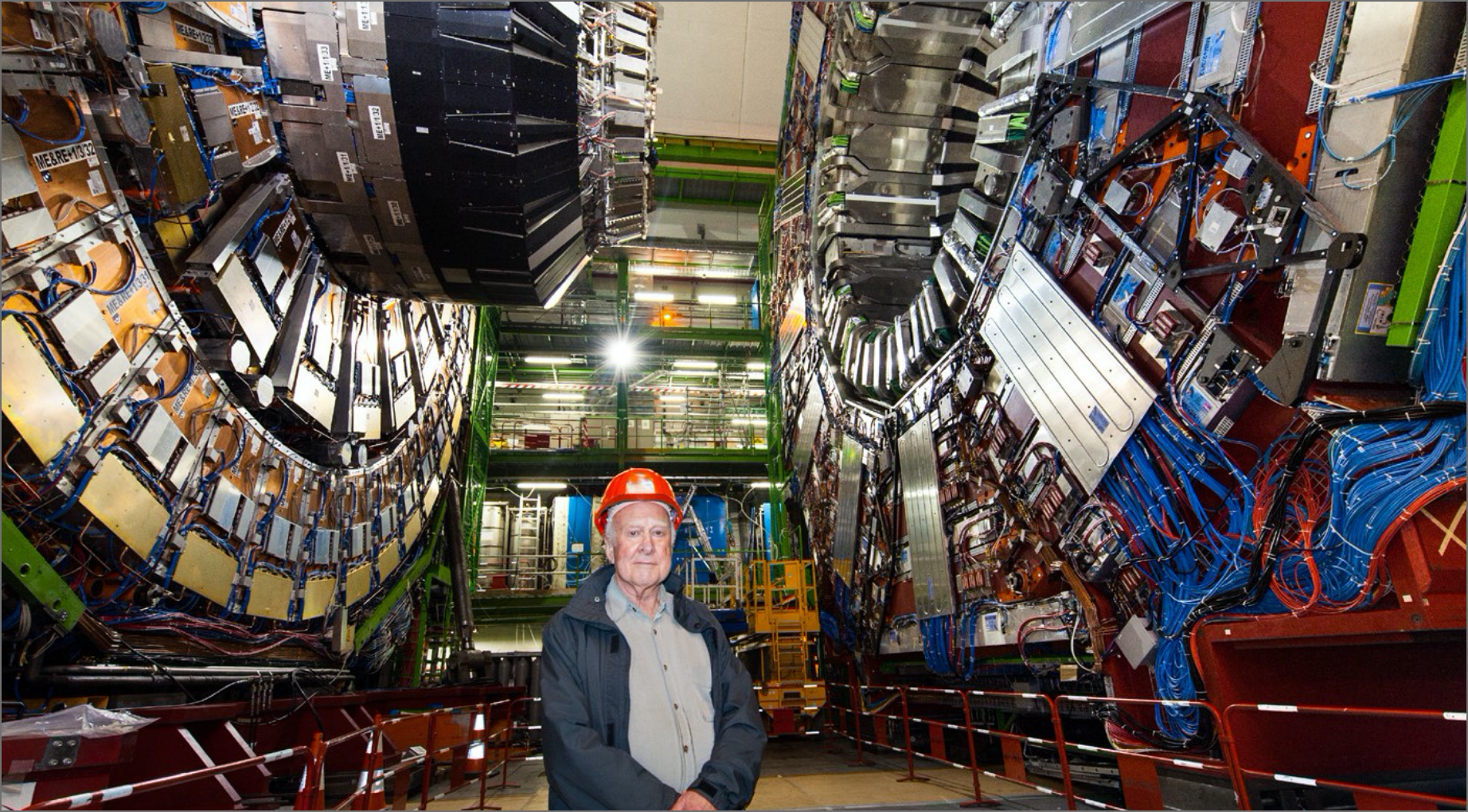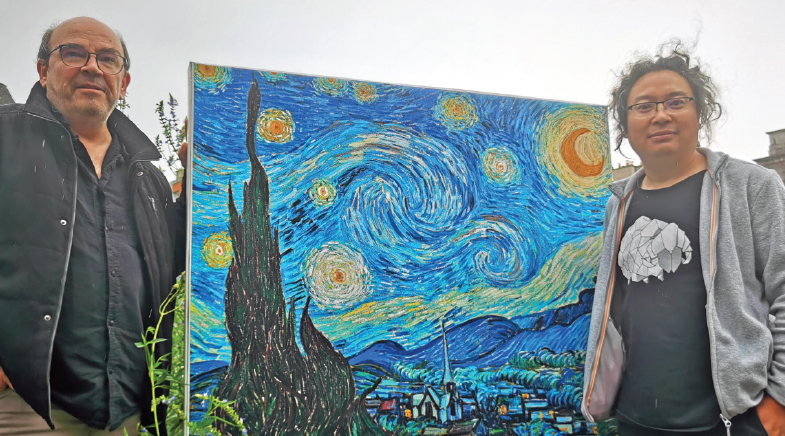The chemistry of life
-
- from Shaastra :: vol 04 issue 05 :: Jun 2025

In labs across the world, chemists are studying the origins of life.
It was a day like any other for Dibyendu Das — until an observation by his student, Antara Reja, had him sprinting to his laboratory. It was during COVID-19 times, and Das, an Associate Professor in the Department of Chemical Sciences at the Indian Institute of Science Education and Research (IISER) Kolkata, had convened a virtual team meeting from his official quarters because of protocols necessitated by the pandemic. And then Reja, who joined them from the lab, informed the team that a molecule it had synthesised was repeatedly changing its state, turning from a gel to a solution and back again (go.nature.com/4ku5qQz). Das rushed to the lab to see the molecule transform.
Das, who had developed a keen interest in science fiction as a boy, had been fascinated by the connection between chemistry and life. This passion spurred him to establish his lab at IISER Kolkata to investigate the role of molecules in the origin of life. Das's group studies the precursors of proteins, nucleic acids, or amino acids, also known as life molecules. He believes these molecules must have evolved from simple and intelligent molecules. "I am curious to know how chemical assemblies evolve without the help of biological enzymes or cells," Das explains.
The oscillation between a solution form and gel showed a self-organising property and a complex nature that are intrinsic properties of a life-like molecule.
Three critical abilities — replication, metabolism, and creating organisations — give molecules a life-like characteristic. The experiment at the lab — the oscillation between a solution form and gel — showed a self-organising property and a complex nature that are intrinsic properties of a life-like molecule. Researchers had earlier developed a chemical that oscillated between two states using a large aggregation of molecules. The IISER group used a single amino acid or dipeptide that could autonomously assemble and disassemble in a closed set-up. The molecule makes and breaks bonds on its own, and speeds up its reactions when assembled. It's a two-way reaction where the output of one step accelerates the other (known as feedback) through new chemical bonds. This helps it run in a self-sustained cycle without outside help. Living systems use complex reactions to make and break molecules. The study shows that even a simple amino acid or dipeptide system can mimic such complexity. It proves that complex life-like molecules evolved from simple chemical structures.
The IISER Kolkata group has filed a patent for a drug delivery system using the oscillation of states of their chemical. The molecule changes its form, enabling the mechanism to release the drug at an appropriate time or when needed.
"Living matter is a non-equilibrium state, and so is our sol-gel reaction," says Das. For a recent study (bit.ly/4ddEVwr), the team combined simple chemicals — a nitrogen base, an amino acid, and a helper molecule (cofactor) — to prove the non-equilibrium nature of life-like molecules. With the help of an energy-rich chemical, these parts formed temporary structures that could carry out a reaction. Once the reaction was complete, the structures broke down on their own (in a process of self-regulation). The system could also break down a separate molecule to make more of the energy-rich chemical, helping the structures last longer. This created a simple feedback loop, similar to what is seen in living systems.
MOLECULE AS A FOUNTAIN
In 2004, Addy Pross, Emeritus Professor of Chemistry at the Ben-Gurion University of the Negev, Israel, addressed how molecules became a living system. He proposed that a dynamic kinetic stability process supported the non-equilibrium condition of a living creature. For life to persist, creation and destruction have to carry on simultaneously. "You are a chemical fountain. Everything in you is turning over all the time. The molecules that make you up are in a dynamic state, continually turning over," Pross says.
Pross explains to Shaastra how bacteria defend themselves against viral attacks by incorporating a fragment of the viral DNA into their own genome if the initial attack fails. This genetic memory allows the bacteria to recognise and destroy the virus by cutting its DNA in future encounters. He emphasises that this process is not random but a purposeful change in the bacterium's genome aimed at self-protection. Through this, Pross has been able to address why molecules evolved into life, rather than just how they gave rise to it.

In a 2023 paper (bit.ly/DKS-life), Pross and a collaborator proposed that the origin of life may be fundamentally rooted in the principle of thermodynamics, specifically the way chemical systems dissipate energy. It argued that energy dissipation is not merely a by-product of chemical reactions but a driving force that can lead to the self-organisation of matter. Through this process, simple chemical systems can spontaneously evolve into more complex and autonomous structures, mimicking features of living organisms. The study provides a theoretical framework suggesting that life's emergence could be a natural outcome of energy flow through matter, which fosters increasing chemical complexity and functionality even in the absence of any biological machinery.

UNDERSTANDING BUBBLES
Subhabrata Maiti, Associate Professor of Chemistry at IISER Mohali, is interested in the movement mechanism of molecules, known as chemotaxis. In ongoing research, he has been seeking answers to how early life molecules, such as lipids, formed blobs to protect life.
According to the Lipid World hypothesis, the earliest building blocks of life on Earth may have been oily molecules called lipids. These lipids could naturally come together in water to form tiny bubbles or droplets — the way oil forms blobs when mixed with water. These formations are known as micelles and vesicles. Micelles are small balls of lipid molecules, and vesicles are hollow bubbles containing water. Scientists believe these simple structures could have served as the first protective shells for the chemistry of life, long before the appearance of complex molecules such as DNA and proteins.
Researchers are seeking to bridge the gap between complex modern metabolism and its primitive origins.
The IISER Mohali group points out that early bubbles likely came from simple fats such as oleic acid and later evolved into stable structures made of phospholipids, helping them grow, divide, and resemble modern cell membranes. Early fatty acid bubbles, especially from oleic acid, are the key to origin-of-life studies because they trap molecules and hold chemical reactions.
Maiti's group focuses on understanding how well both early and modern bubbles can trap and interact with small but different chemical molecules. The goal is to see if early bubbles were more open to diverse molecules, and if modern ones are more selective. They test chemical reactions inside these bubbles, which may help them understand how life began.
Maiti and his team are exploring another mystery in the chemistry of life: chirality or handedness. The word chiral comes from the Greek cheir or hand. Some objects look different when seen in a mirror. This happens in molecules, too. A chiral molecule cannot be superimposed on its mirror image. For most biological molecules, life chooses just one version. For example, all proteins in the body are made from left-handed amino acids, though scientists have just found an ancient molecule that works in both mirror-image forms (bit.ly/protein-ancient). DNA uses right-handed sugars, called homochirality. The mix of mirror-images is heterochirality.
Maiti explains that the origin of life has a bias towards homochirality, though the reason behind this bias is still unknown. Heterochiral molecules were also formed under early Earth conditions and are found in modern bacteria. These molecules can self-assemble, catalyse reactions, and have antimicrobial properties. This suggests that early biochemistry may have been more structurally diverse than it is today. The team is now studying how vesicles or membrane-like structures may have influenced the shift from heterochiral to homochiral systems.
AN INTERSTELLAR GIFT?
While some researchers focus on how life originated, a group from the University of Hawai'i at Mānoa, led by Ralf I. Kaiser, is more interested in where it came from. In a recent study (bit.ly/Abiotic-origin), they suggest that life-building molecules may have arrived as an interstellar gift, delivered to Earth by asteroid impacts. The Hawai'i group studied the findings of Japan's Hayabusa2 mission, which brought back to Earth samples from the asteroid Ryugu. Analyses revealed the presence of several acids associated with the citric acid cycle (a process that converts food into energy, the basis of metabolism) on Ryugu, despite it never having been in contact with Earth. "Our question became whether we could produce the full citric acid cycle (in the lab). There are still many gaps in our understanding of how this process began on Earth," says Mason McAnally, a research scholar in Kaiser's group and the study's lead author.

In early Earth conditions, before enzymes and proteins evolved, the biochemical processes would have been far simpler than now. The Hawai'i researchers wanted to bridge the gap between complex modern metabolism and its hypothetical, primitive origins. The team replicated the extreme conditions found in dense molecular clouds, regions in space where stars and planets are born. The temperature was kept at 10-15 Kelvin, and the pressure was extremely low, about 10 trillion times lower than the Earth's atmosphere, mimicking the conditions in those space regions.

In August 2024, after months of meticulous and physically demanding experiments, one of the collaborators, Cornelia Meinert, announced that all the targeted citric acid cycle molecules had been found. "It was a moment of pure joy and relief," McAnally says. The findings suggest that such prebiotic chemistry was likely there in space.
The origin of life may be rooted in the principle of thermodynamics, specifically the way chemical systems dissipate energy.
Life is built on chemical processes honed by billions of years of evolution. "Primitive life probably made use of what was already happening in its environment," McAnally says. "Then, over time, enzymes evolved to speed things up and bring those reactions inside cells."
He believes the chemistry of space is surprisingly simple. The core elements of life are carbon, hydrogen, nitrogen, and oxygen. Molecules formed in interstellar space could have hitched a ride on meteorites during the heavy bombardment of these space rocks roughly four billion years ago, seeding Earth with life's precursors. The same could easily have happened elsewhere, making life across the cosmos an actual possibility.
Researchers are recreating the chemical mechanisms to understand how life may have formed. But will it yield an answer? "We can simulate the conditions, but we can't simulate the time," Das says.
Have a
story idea?
Tell us.
Do you have a recent research paper or an idea for a science/technology-themed article that you'd like to tell us about?
GET IN TOUCH














